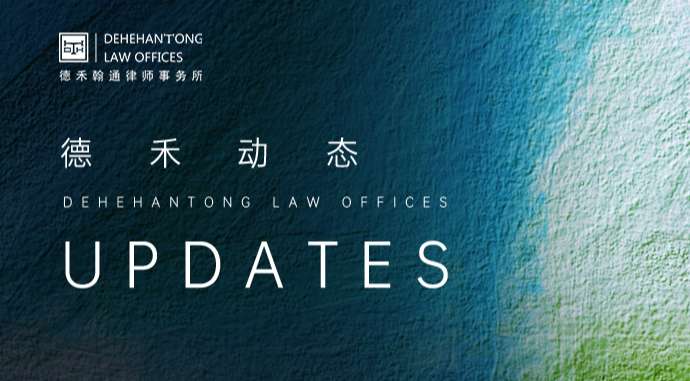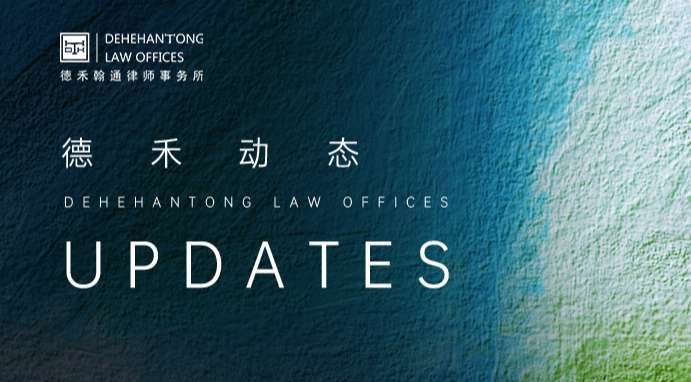6 Reflections on commercial dispute resolution cases behind case number
This is a bill recourse case. In late September 2021, the author officially accepted the commission of the party (the plaintiff in the case). From mid-October 2021, the basic court of a city in the capital of a province in Northwest China ("A Court") formally filed the case until the end of execution (August 2024), and it took nearly three years for the parties to recover the money.
This case is very representative in the settlement of commercial disputes, the author summarized as follows:
1. The whole process of the case
Customer Company A supplied goods to Company B ("direct forehand") in the course of a normal business transaction. Directly endorse an electronic commerce acceptance bill to Company A as consideration, the drawer and the acceptor are Company C (a subsidiary of a well-known"Thunder"real estate company HD).
The case was formally filed by Court A in early October 2021 and received an application for property preservation. And so the long wait began. The court neither gave notice of session nor dealt with the application for preservation. It was not until June 24, 2022 that I received the court's decision to dismiss the suit.
After repeated contact, the presiding judge even said that"the appeal could not be found", and it was not until late September that he replied that the appeal had been found and would be submitted to the Central Court. Again, stuck in a long wait.
During the period, the author exhausted various ways, and even left a message to the mailbox of the president of the municipal Intermediate Court and the Provincial High Court, and finally received a phone call from the original judge in February 2023, confirming that the appeal had been submitted to the Intermediate Court. After the author's full defense in the process of second instance, in March 2023, the second instance ruled that the original ruling was revoked and the original trial court was ordered to hear it. At the same time, received a notice to reopen the case.
However, an application for property preservation filed a year and a half ago remains outstanding. The author again left a message to the mailbox of the president of the Middle Court of the city, and reflected the situation through the disciplinary inspection hotline of A court... Until late May 2023, under the intervention of the Trial Management Office of the Court A, the funds of the local provincial capital investment company, one of the defendants, were finally frozen.
In mid-July 2023, after the re-trial of the case, the court did not accept the view that we had completed the burden of proof (see the second part), and directly rejected our claim under Article 10 of the Negotiable Instruments Law.
We appeal again. After some twists and turns, in November 2023, the second instance considered that the basic facts of the original judgment were unclear and the procedure was improper, and ruled that the original judgment was revoked and remanded for retrial.
The retrial began in March 2024. After strengthening our evidence (see Part 3), Court A finally ruled in favor of all our claims. In mid-April 2024, the judgment took effect. After applying for enforcement, the defendant's security frozen funds were deducted in August (only enough to cover the principal, but less than the interest part). Ironically, the implementation costs are also deducted from the frozen funds (equivalent to being paid by our applicants).
After nearly three years, three"early Republic of China"case numbers, two"people end"case numbers, and one"execution"case number finally lived up to their trust and obtained most of the payment for the parties.
2. Disputes concerning the scope of the burden of proof of the holder in the instrument law
Article 10 of the Negotiable Instruments Law stipulates that"the issuance, acquisition and transfer of negotiable instruments shall follow the principle of good faith and have a real transaction relationship and creditor's debt relationship", which is the only legal basis for the original trial court to reject all the appellant's claims as stated in"This Court's Opinion".
However, Article 8, paragraph 2, of the Provisions of the Supreme People's Court on Several Issues concerning the Trial of Negotiable Instrument Disputes (revised on December 23, 2020, referred to as the"Judicial Interpretation of the New Negotiable Instrument Law"stipulates that"In accordance with the provisions of Article 4, paragraph 2, Article 10, Article 12, and Article 21 of the Negotiable Instrument Law, the bearer who brings a lawsuit to the people's Court has the responsibility to provide the negotiable instrument."Where fraud, theft, coercion, intimidation, violence or other illegal acts are involved in the issuance, acceptance, delivery or endorsement of the bill, the holder shall be responsible for proving the legality of the holding of the bill.
Obviously, the meaning of the first half sentence of this paragraph is that according to the provisions of Article 10 of the Negotiable Instruments Law, the holder's responsibility is only to"provide the bill in dispute", because from the appearance of the right, it is generally presumed that the holder has obtained the bill in a lawful manner, so the holder can be regarded as having completed the burden of proof as long as the bill is produced.
The second half sentence of this paragraph on "special circumstances", that is, only in the issue of the bill, acceptance, delivery, endorsement transfer suspected of fraud, theft, coercion, intimidation, violence and other illegal acts, the holder of the bill to prove the legitimacy of the bill. In other words, the debtor of the bill must defend the legitimacy of the fundamental relationship of the bill to the bearer and prove it before the burden of proof of the legitimacy of the bill is transferred to the bearer.
In the original first instance, the appellee Provincial Capital Investment Company only pointed out in the defense that"through inquiry, the respondent is currently in a number of disputes over the recourse right of the bill as the plaintiff", in addition, there is no evidence or clue that can reflect reasonable doubt about the legitimacy of the holder's acquisition of the bill. Moreover, the appellant, as a small business at the end of the supply chain with no bargaining power, can only fight for its legitimate rights and interests through litigation in the face of the reality of the comprehensive "explosion" of HD business votes, which is exactly the true portrayal of the appellant's helplessness.
Third, in the law of evidence, how to seek the second best"defense strategy".
Since we claim that the holder only has the obligation to produce the bill according to law, and has no burden of proof for the legitimacy of holding the ticket, the evidence submitted only includes the bill behavior information such as the face of the bill involved in the case, endorsement, presentation of payment and corresponding ECDS display video. The proof of the basic legal relationship between us and the direct former party (purchase and sales contract, receipt confirmation and warehouse receipt) is not used as evidence, but the corresponding originals are also presented in court for verification.
It is this strategy of the author that collides with the judge's understanding of the above judicial interpretation.
In this case, the materials used by the plaintiff to prove the legality of holding the ticket (purchase and sale contract, receipt confirmation and warehouse receipt) are all instruments signed or made between the plaintiff and his immediate predecessor. Although the defendant cannot prove that the material is false, it is difficult for us to prove that it is true (non-false).
Through assisting the parties to dig deeply into the case, the author found that the parties are in the same area as the buyers and suppliers, and in the actual trade process, the buyers go to the suppliers directly to pick up the goods, and the parties earn the difference. If it can be proved that there is a transaction between the parties and the suppliers, and it can form a correspondence with the basic relationship of the bill involved in the case, it can also confirm the authenticity of the plaintiff's legitimacy materials.
In the retrial, we supplemented the transaction materials between the plaintiff and the supplier, which formed cross-corroboration with the previous evidence, and obtained the approval of the presiding judge for the high probability, and the final judgment supported our claim.
Iv. Enlightenments from the textbook procedure and atypical circumstances of this case
In terms of procedure, the case went through a textbook process of "prosecution → ruling to reject the prosecution → appeal → Revocation of the ruling, appointment of trial → first instance ruling to reject the lawsuit request → Appeal → Revocation of judgment, retrial → Retrial (first instance) → decision to support the lawsuit request → application for execution".
For the plaintiff, the time cost of a lawsuit that takes so long to get the result it deserves is huge. After all, the phenomenon of different courts and different judges"the same case and different sentences"is by no means a case. In fact, the"defense strategy"of lawyers arguing legally and retaining the evidentiary clues of"stepping back"can be effectively solved in most cases, but there is still room for"retreating"under the"atypical situation"of this case.
As an attorney, the first thing you need to realize is that these issues may have a significant impact on the final outcome of the case and must be properly resolved at the lowest cost (including money and time). Therefore, the author tried through various ways, multi-pronged, including calling 12368 hotline to urge through the provincial High Court, the city Intermediate court president mailbox message, online petition, and even through the court discipline inspection supervision and supervision telephone to reflect the situation.
From the result, the author's measures and evidence strategies have had a positive impact, exhausting all legal remedies for clients, which is the external embodiment of the "Lawyers Law"for lawyers to"safeguard the legitimate rights and interests of the client"internal requirements.
Recommended Information
-
ArticlesInterpretation of the core terms of the investment Agreement (I) - the right of first refusal and the right of joint sale2024-09-25
-
UpdatesDehehantong successfully warehousing China Communications Shanghai Shipping Bureau Co., LTD2024-09-25
-
ArticlesThe problems and suggestions in the issuance of managerial assets in ABS or REITs2024-09-23
-
Case StudiesDehehantong successfully represented a private equity fund company to deal with a series of disputes over the responsibility of its managers2024-09-20
-
ArticlesRelated legal interpretation and risk tips on "Implementing gradual delay of statutory retirement age"2024-09-18















